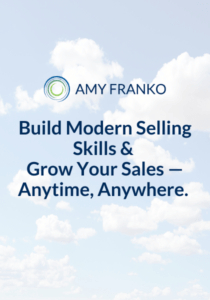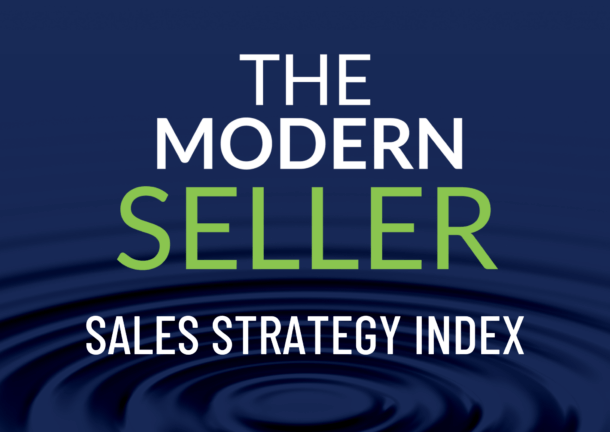What are the people you know saying about your company and you?
Nearly every client I’ve had the opportunity to work with has come from a referral of some kind, whether it’s from another client, or from within my larger professional network. Nielson* research shows that:
- 92% of consumers trust referrals from people they know.
- People are 4X more likely to buy when referred by a friend.
- 84% of consumers say they either completely or somewhat trust recommendations about products and services from family, colleagues, and friends.
These recommendations are the information source ranked highest for trustworthiness.
The most successful sales pros and business developers view their network with the same level of importance as they do their best clients and prospects. A network is something that’s intentionally cultivated over time and that work becomes part of our everyday habits.
3 Strategies to Establish a Referral Network Plan and Drive Sales
In last week’s blog, I looked at the importance of a peer referral network. This article outlines several strategies to help you create a plan for increasing the number and quality of your referrals. As you’re reading, choose the strategies that will work best for you, or challenge yourself to incorporate a new strategy into your existing referral plans.
1. Leverage LinkedIn
LinkedIn has about 500 million users, and it remains the top platform to build your network and elevate your business development efforts. Any network referral partner you work with or client referring business to you will expect you to have a current LinkedIn profile that shows consistent engagement. A prospect considering doing business with you will first research you on LinkedIn. The items that are most important to keep up to date include:
- Professional Headline
- Summary
- Professional profile photo
- Thought leadership media: regular posting with short blogs, longer-form articles, and white papers
- Video: Videos are a growing trend in social engagement, and LinkedIn allows you to add video to your profile and updates.
A few other tips to keep in mind to help maximize your professional presence on LinkedIn:
- Create your unique profile URL.
- Customize your requests to connect; you’ll increase your chances of your invitation being accepted and remembered. Be sure to connect as a first-degree connection with anyone you’re considering as a network referral partner.
- Connect with former colleagues who have retired or transitioned to working for a client. They can become a strong referral source. When you’re connected to them via LinkedIn, it expands your access to other potential prospects and centers of influence.
- Download your contacts quarterly and review them. For directions on how to do that, view this article. Once you complete the steps you’ll receive an email with a link to download your list of connections.
2. Create a Loyal Client Network
Chances are, you have hundreds (or thousands) of contacts in your LinkedIn network, many of which are current and past clients. But not all clients are referral candidates.
Loyal B2B customers spend 10 times more than new ones, and 84 percent of B2B decision makers start the buying process with a referral. Your loyal customers will be more likely to refer you, because they know and trust your reputation. (More on loyal clients here.)
To get started with this step, identify your top five most loyal clients that may become ideal referral sources for you. You’ll want to determine who within the client has the potential to be your advocate, to help you open some doors. It’s also important have your business development goals in mind, and some research completed on who these client advocates are connected to, and how they can best help you.
One of the most effective ways I have built my book of business is to host a quarterly forum that includes my top clients. I host them over lunch, and moderate conversations on a topic important to them. It’s a non-selling environment that allows them to network with and learn from one another. This creates a high-value referral environment. My clients will often recommend others who may be a fit for the forum, or they’ll initiate conversations that lead to new business development.
3. Create a Peer Network
Creating a peer network is another strong strategy for building your referral base. These are like-minded professionals who service the same client types, but offer complimentary/non-competitive services.
To create a strong peer network, identify 5-10 potential peers that could be an ideal fit. The companion video gives you the five traits to look for in an ideal network partner. Below are some steps you can take to build your peer network:
- As you would with your client advocates, you’ll want to keep your business development goals in mind, and do some research on your potential peer network partners.
- Set an initial meeting with these potential network partners, face-to-face if possible. With this type of meeting you can update one another on key offerings, as well as the types of clients that are an ideal fit for each of you.
- Assuming there’s a strong fit, you now have an opportunity to cross reference each other’s clients and centers of influence for potential matches.
- Commit to making introductions for each other on a regular basis, and create a cadence for regular follow-up with one another.
- To take this a step further, you might even create a technology-based community to share best practices (such as a private LinkedIn group), or an in-person community where you come together quarterly to strategize on business development.
Taking a network approach like this casts a wider, but still targeted, net for building your referral base. It will also create more momentum for you around lead generation.
For more strategies on driving sales by building your social capital, download A Modern Seller is Social, a free chapter from my book, The Modern Seller.


 Our Strategic Selling signature sales training program is now available online. This online sales learning program is ideal for professional services and B2B sales. Get started with 2 free lessons.
Our Strategic Selling signature sales training program is now available online. This online sales learning program is ideal for professional services and B2B sales. Get started with 2 free lessons.